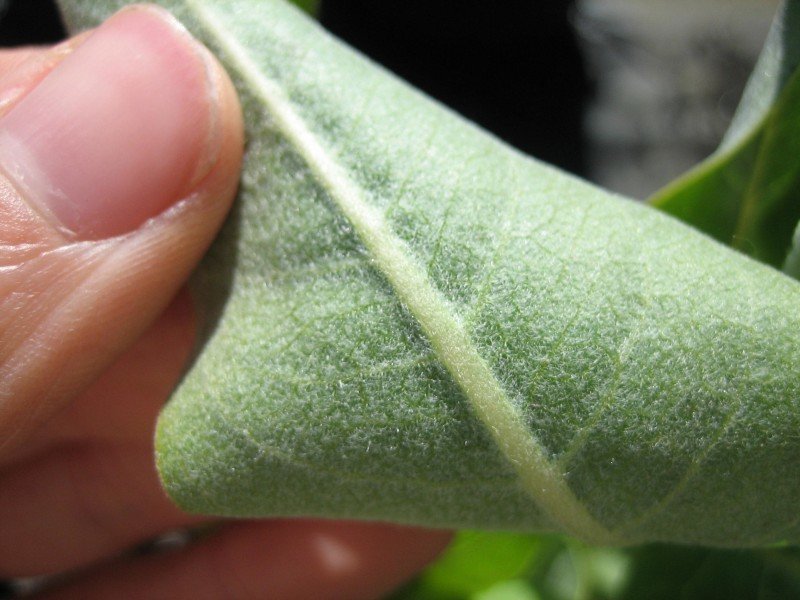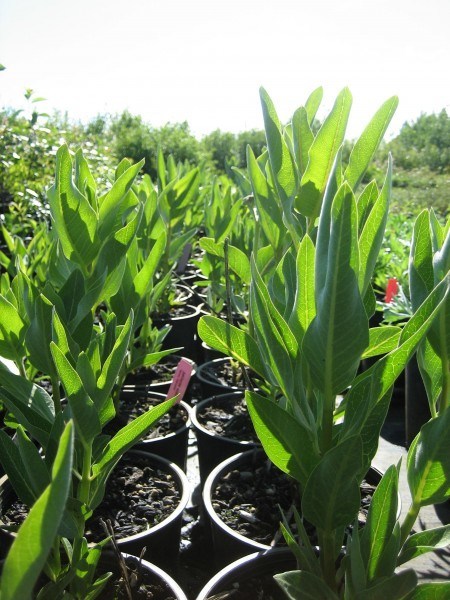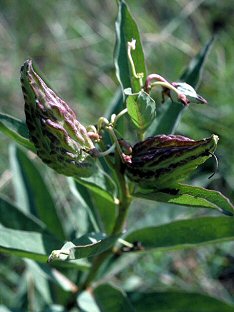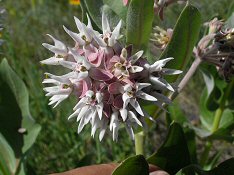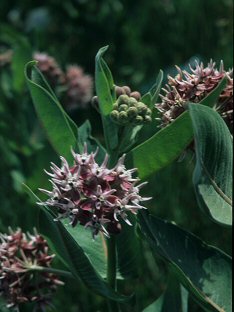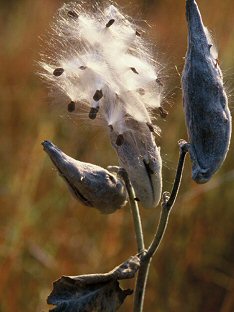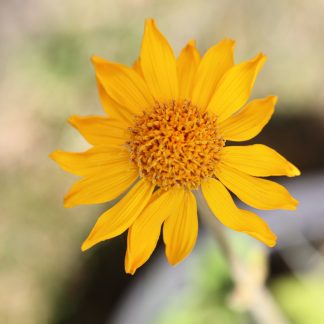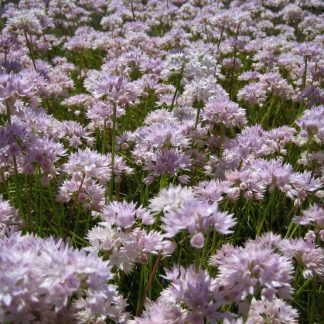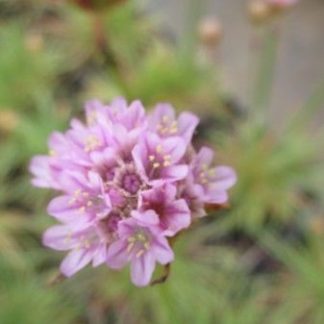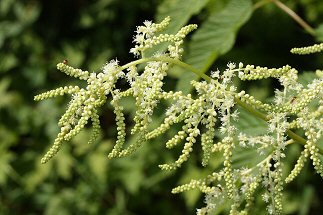Asclepias speciosa
showy milkweed
Habit: Asclepias speciosa is a low-growing herbaceous perennial spread by rhizomes. The whole plant is grayish and pubescent, except for a few specimen that sometimes are free from hair. From late May to July, during bloom, showy milkweed is easily recognized by the striking beauty of its large pink to reddish purple inflorescence. The flowers are densely woolly and arranged in an intricate umbel structure, each one composed of 15 to 25 blossoms. Individual blossoms bear 5 petals each and are sharply bent backwards. The stems, which shoot up to about 3 feet high, are hollow and ooze with milky juice, as happens with other milkweeds. The long (up to 6 inches) felty leaves occur in opposite pairs, and vary in shape from ovate to oblong to cordate (heart-shaped). After flowering is completed, hairy pods filled with brown, flat seeds are produced.
Ecology: widely scattered at low elevations and dry climates, Asclepias speciosa is more common east of the Cascades. Its also present in low to mid elevations, up to 6500 feet, of other suitable regions ranging from California to British Columbia and east to the Mississippi Valley.
Growing Conditions: showy milkweed favors loamy to sandy, moist soils and can be generally found in open areas along streams and ditches nearside roadways. It thrives in full sun or very light shade. Blossoms are visited by multiple insects, including the western monarch butterfly. Asclepias speciosa has a relatively long bloom period, 2 to 3 months, making it a reliable source of nectar for monarchs. The plant’s large, thick leaves are also great to sustain the butterfly’s offspring.
The intricate shape of the flowers is designed to attract insects and then hold their feet so that they can be soaked in a good amount of pollen. The milky juice of Asclepias contain poisonous resinoids and glycosides that, when ingested by the insects, help them to repel hungry predators such as birds and small mammals.
Named after the Greek god of healing, Asklepios, milkweed has been used medicinally by native people from the Americas. The Secwepemc used the sap to treat warts and Nlaka’pmx used it as a facial cream.
Specs
Herbaceous Perennial
2-6 feet (60-180 cm)
1-4 feet (30-120 cm)
4a-9b

